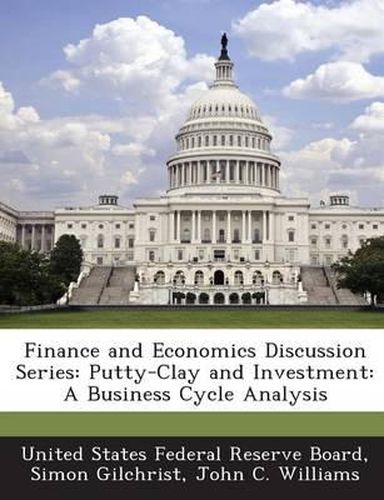Readings Newsletter
Become a Readings Member to make your shopping experience even easier.
Sign in or sign up for free!
You’re not far away from qualifying for FREE standard shipping within Australia
You’ve qualified for FREE standard shipping within Australia
The cart is loading…






This paper develops a dynamic stochastic general equilibrium model with putty-clay technology that incorporates embodied technology, investment irreversibility, and variable capacity utilization. Low short-run capital-labor substitutability native to the putty-clay framework induces the putty-clay effect of a tight link between changes in capacity and movements in employment and output. As a result, persistent shocks to technology or factor prices generate business cycle dynamics absent in standard neoclassical models, including a prolonged hump-shaped response of hours, persistence in output growth, and positive comovement in the forecastable components of output and hours. Capacity constraints result in a nonlinear aggregate production function that implies asymmetric responses to large shocks with recessions steeper and deeper than expansions. Minimum distance estimation of a two-sector model that nests putty-clay and neoclassical production technologies supports a significant role for putty-clay capital in explaining business cycle and medium-run dynamics.
$9.00 standard shipping within Australia
FREE standard shipping within Australia for orders over $100.00
Express & International shipping calculated at checkout
This paper develops a dynamic stochastic general equilibrium model with putty-clay technology that incorporates embodied technology, investment irreversibility, and variable capacity utilization. Low short-run capital-labor substitutability native to the putty-clay framework induces the putty-clay effect of a tight link between changes in capacity and movements in employment and output. As a result, persistent shocks to technology or factor prices generate business cycle dynamics absent in standard neoclassical models, including a prolonged hump-shaped response of hours, persistence in output growth, and positive comovement in the forecastable components of output and hours. Capacity constraints result in a nonlinear aggregate production function that implies asymmetric responses to large shocks with recessions steeper and deeper than expansions. Minimum distance estimation of a two-sector model that nests putty-clay and neoclassical production technologies supports a significant role for putty-clay capital in explaining business cycle and medium-run dynamics.